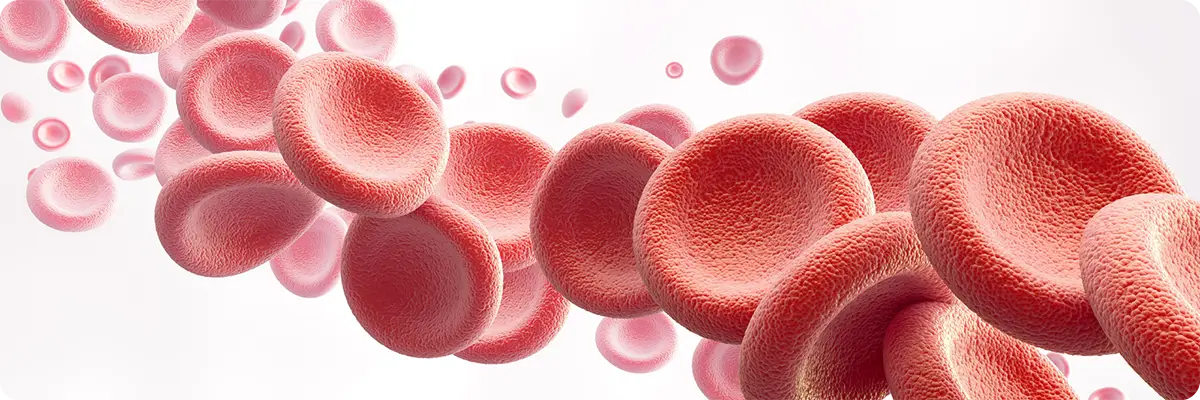Solutions
keyboard_arrow_downServices
keyboard_arrow_downSupport & Resources
keyboard_arrow_downCompany
keyboard_arrow_downContact
Clinical Significance
sPLA2-llA production of fatty acids and biologically active phospholipids plays an important role in platelet, monocyte, and endothelial activation, processes known to be critical steps in atherogenesis.1
Unlike traditional cardiac biomarkers used to predict adverse outcomes in patients with acute coronary syndrome (ACS), sPLA2-llA has been shown to act at multiple pathways involved in atherogenesis, from lipid oxidation to modulation of vascular & inflammatory cell activation and apoptosis.2
Biological Significance of sPLA2-IIA
Key observations through research has found that sPLA2-llA mediated modification of lipoproteins plays a role in the development of atherosclerosis. The surface of both low-density lipoprotein cholesterol (LDL-C) and high-density lipoprotein cholesterol (HDL-C) is surrounded by phosphatidylcholine (PC) a type of phospholipid which has been scientifically proven to serve as a good extracellular target for several isoforms of sPLA2-llA. sPLA2-llA works by hydrolysing these phospholipids resulting in the production of free fatty acids and lysophophatidylcholine (LPC) which can generate pro-inflammatory actions, accelerating atherosclerosis.1
Hydrolysis of LDL-C correlates with the production of the more atherogenic, small dense LDL cholesterol (sdLDL-C). The sPLA2-llA -processed low-density lipoprotein (LDL) contains a large amount of lysophospholipids and exhibit the property of “small-dense” or “modified” LDL, which facilitates foam cell formation from macrophages. Research has shown that high plasma levels of sdLDL-C compared to less dense, larger LDL-C create a higher risk of coronary heart disease.
Cardiovascular Disease
Regular cardiovascular screening is important to ensure that cardiac risk factors are detected at the earliest possible stages. Cardiovascular disease (CVD) encompasses a number of diseases of the heart and blood vessels. Four of the main types of CVD include: coronary heart disease (CHD), cerebrovascular disease (CVA), peripheral arterial disease (PAD) and aortic disease. It is vital that at risk patients are diagnosed as quickly and efficiently as possible to ensure effective treatment plan implementation.4
The early diagnosis of CVD aids in reducing the risk of a secondary cardiovascular event and to ensure the patient receives appropriate treatment to prevent premature deaths. Early risk assessment is particularly important in people who are at a greater risk of CVD. This is evaluated through the identification of one or more risk factors including: hypertension, diabetes or hyperlipidaemia.3, 5
It is believed that by 2030, almost 23.6 million people will die from CVD, mainly CHD and CVA, and is projected to remain the single leading cause of death. This provides further confirmation that early diagnosis is vital to prevent and reduce the number of deaths attributed to CVD.3
Benefits of sPLA2-IIA
A niche assay from Randox which means that Randox is one of the only manufacturers to offer an sPLA2-llA mass assay in an automated biochemistry format
Applications available detailing instrument-specific settings for the convenient use of the Randox sPLA2-IIA assay on a wide range of clinical chemistry analysers
Complementary controls and calibrators available offering a complete testing package
Automated assay which removes the inconvenience and time consumption associated with traditional ELISA based testing
Excellent correlation coefficient of r = 0.95 when compared against other commercially available methods
Liquid ready-to-use format for convenience and ease of use
Latex enhanced immunoturbidimetric method delivers high performance and confidence in results
DID YOU KNOW?
Cardiovascular disease (CVD) is the number one cause of death globally and more people die annually from CVD than from any other cause.3
NOTE: sPLA2 -IIA Assay – For Research Use Only
Biological Significance of sPLA2-IIA
Key observations through research has found that sPLA2-llA mediated modification of lipoproteins plays a role in the development of atherosclerosis. The surface of both low-density lipoprotein cholesterol (LDL-C) and high-density lipoprotein cholesterol (HDL-C) is surrounded by phosphatidylcholine (PC) a type of phospholipid which has been scientifically proven to serve as a good extracellular target for several isoforms of sPLA2-llA. sPLA2-llA works by hydrolysing these phospholipids resulting in the production of free fatty acids and lysophophatidylcholine (LPC) which can generate pro-inflammatory actions, accelerating atherosclerosis. 1.
Hydrolysis of LDL-C correlates with the production of the more atherogenic, small dense LDL cholesterol (sdLDL-C). The sPLA2-llA -processed low-density lipoprotein (LDL) contains a large amount of lysophospholipids and exhibit the property of “small-dense” or “modified” LDL, which facilitates foam cell formation from macrophages. Research has shown that high plasma levels of sdLDL-C compared to less dense, larger LDL-C create a higher risk of coronary heart disease.
More featured reagents
Read more about our vast range of assays



